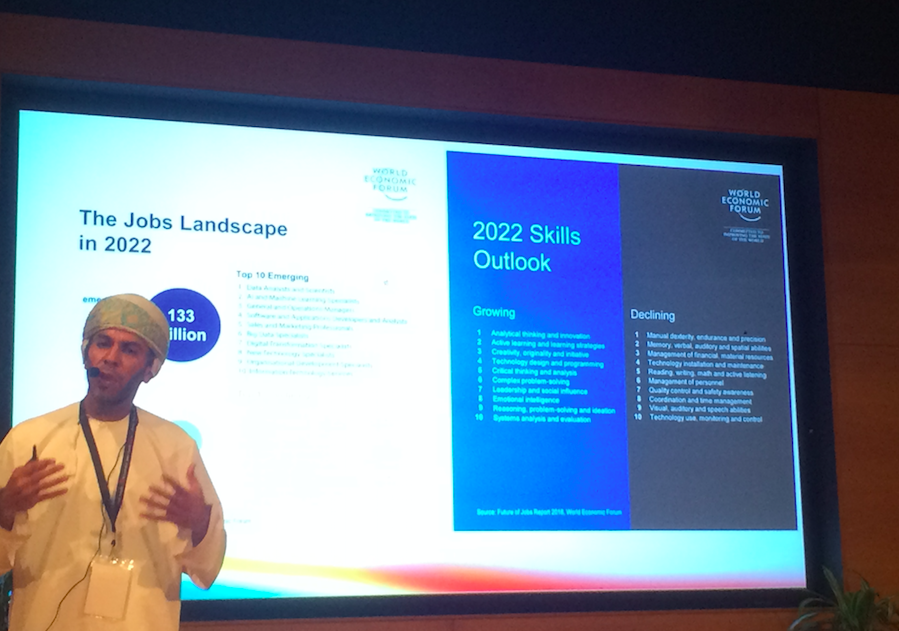
Here, after what to me feels like an eternity, is my table of disruptive technologies, which is designed to make people think, at least periodically. If nothing else I’m sure it will be a catalyst for a few debates, not least some good arguments about what is and isn’t included and where things are positioned in terms of impact and time.
The idea for the table initially came from me stumbling upon a list of emerging technologies on Wikipedia. This felt fairly accurate, but also rather lifeless. It wasn’t especially contextual either. Other lists from MIT Tech Review and McKinsey were better, but somehow these weren’t showing the bigger picture either.
Using all this as a good starting point I did some further research to identify candidate technologies and then spoke with Anna and academics at Imperial College to validate the thinking. This was the easy bit.
The tricky part was then deciding which technologies to leave out and how to rank both the disruptive potential of each technology and time (both near impossible, but we had a good go using small post-it notes that could be moved around easily). What results is far from perfect, but it’s better than anything else I’ve seen and it’s hopefully a foundation for people being wrong in really useful and interesting ways.
Here’s how it works.
The table consists of 100 potentially disruptive technologies, which we have defined as new technologies capable of significant social, economic or political upheaval.
One axis (Y Axis) ranks potential for disruption from high to low, while the other (X Axis) is time ranked from sooner to later. Importantly, time relates to common usage or ubiquity, not initial invention. All very subjective, I know, but it has been thought about quite a bit.
The 100 technologies (99 really) are then divided into four groups. Horizon one technologies (green on the table) are new technologies that are happening right now. Companies should be integrating and executing these technologies right now if they are appropriate.
Horizon two technologies (yellow) are probable near future technologies (10-20 years hence). Companies should be experimenting and discussing these technologies now.
Horizon three technologies (red) are things that are likely to emerge in the more distant future (20 years plus). Companies should keep an eye on developments in these areas and explore when appropriate.
The outer edge of the table (grey) contains what we’ve termed Ghost Technologies. This is the really good bit! This is fringe thinking territory with some ideas bordering on complete lunacy. However, while each example is highly improbable, very few, if any, are totally impossible.
Each of the 100 technologies has then been given an abbreviation, followed by a very brief and hopefully self-explanatory description. Each technology is then categorized according to one of five subjective themes (Data Ecosystems, Smart Planet, Extreme Automation, Human Augmentation and Human-Machine interactions).
On the far right of the table are examples of companies active in each of the technology areas. (Thanks to Roddy for thinking of this and to Gaby for researching it).These examples are not comprehensive and if I’ve missed anything significant (or put something in the wrong place, which is quite possible) then apologies. BTW, note the number of US companies on this list and also the strength of Apple, Google and Musk.
A couple of things worth pointing out are what’s missing from the table, especially the impact of human psychology (users) and the way in which two or more technology elements might interact (see the small print at the bottom of the chart).
A high resolution Pdf suitable for printing is here. I’d recommend A2 full colour minimum. Ask if you need another file type or hard paper copies.
The list of 100.
Smart nappies
Deep ocean wind farms
Vertical agriculture
Wireless energy transfer
Cryptocurrencies
Concentrated solar power
Predictive policing
Micro-scale ambient energy harvesting
Robotic care companions
Smart control of appliances
Cultured meat
Delivery robots and passenger drones
Distributed ledgers
Precision agriculture
Autonomous vehicles
Intention decoding algorithms
Balloon-powered internet
Powered exoskeletons
Computerised shoes and clothing
Airborne wind turbines (high altitude)
Avatar companions
Metallic hydrogen energy storage
Autonomous ships and submarines
Resource gamification
Water harvesting from air
Drone freight delivery
Autonomous passenger aircraft
3D-printing of food and pharmaceuticals
Medical tricorders
Smart flooring and carpets
Diagnostic toilets
Smart energy grids
Algal bio-fuels
Human organ printing
Artificial human blood substitute
Mega-scale desalination
Self-writing software
Public mood monitoring machines
Programmable bacteria
Peer-to-peer energy trading and transmission
Lifelong personal avatar assistants
Smart dust
Predictive gene-based healthcare
Automated knowledge discovery
Autonomous robotic surgery
Emotionally aware machines
Humanoid sex-robots
Human bio hacking
Internet of DNA
Vacuum-tube transport
Scram jets
Smart glasses and contact lenses
Pollution-eating buildings
Broadcasting of electricity
Bio-plastics
Swarm robotics
4-dimenional materials (and printing)
New (Nano) materials
Fusion power
Low-cost space travel
Colonisation of another planet
Thought control machine interfaces
Dream reading and recording
Planetary-scale spectroscopy
Implantable phones
e-tagging of new-borns
Male pregnancy and artificial wombs
DNA data storage
Genomic vaccines
Quantum safe cryptography
Cognitive prosthetics
Data uploading to the brain
Conversational machine interfaces
Life-expectancy algorithms
Stratospheric aerosols
Battlefield robots
AI advisors and decision-making machines
AI board members and politicians
Invisibility shields
Factory photosynthesis
Trans human technologies
Digital footprint eraser
Personal digital shields
Human head transplants
Human cloning and de-extinction
Distributed autonomous corporations
Space solar power
Space elevators
Fully immersive VR
Artificial consciousness
Telepathy
Reactionless drive
Whole Earth virtualisation
Shape shifting matter
Self-reconfiguring robots
Zero-point energy
Beam-powered propulsion
Force fields
Asteroid mining
I can’t talk about the last one 😉
Further reading links
McKinsey & Company article of disruptive technologies
https://www.mckinsey.com/business-functions/digital-mckinsey/our-insights/disruptive-technologies
Accenture 5 disruptive technologies
https://www.accenture.com/gb-en/insight-disruptive-technology-trends-2017
EY 4 disruptive themes
http://www.ey.com/Publication/vwLUAssets/EY-four-themes-describe-historic-change-in-the-technology-sector/$FILE/EY-four-themes-describe-historic-change-in-the-technology-sector.pdf
List of emerging technologies – Wikipedia
https://en.wikipedia.org/wiki/List_of_emerging_technologies
Disruptive Technologies by Paul Armstrong
https://www.amazon.co.uk/Disruptive-Technologies-Understand-Evaluate-Respond/dp/0749477288
Disruption hub
https://disruptionhub.com/2018-disruptive-trends/
KPMG
https://assets.kpmg.com/content/dam/kpmg/xx/pdf/2016/11/disruptive-technologies-barometer-tech-report.pdf
MIT Tech Review
https://www.technologyreview.com/lists/technologies/2018/
PS – Big thanks to Anna, Gabby, Nik and Lawrence who helped with this. Images of table development below.






















